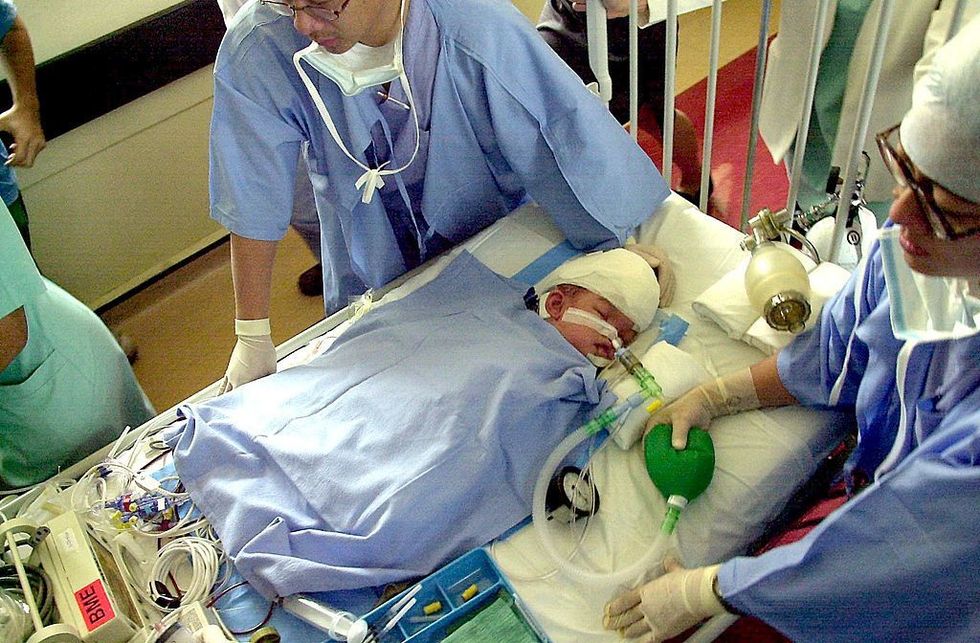Ganga and Jamuna Shrestha are not just ordinary twins; they were conjoined at birth, with their heads fused. Doctors at the Singapore General Hospital now took on the role of saving these twins, devoting much of their time to separating their heads.
Aided by computer-imaging technology, a team of 20 doctors led by Dr. Goh committed several hours, almost four days, to safely separate the Shrestha twins’ brains.
The Painstaking Craniopagus
The longest surgical operation ever went on for more than four days straight. The twins Ganga Shrestha and Jamuna Shrestha were conjoined at birth. They were only 11 months old when they underwent surgery at the Singapore General Hospital, handled by 20 doctors led by Dr. Keith Goh. Ganga and Jamuna were sharing a brain cavity, making the whole surgery riskier.
Their recovery was the twins’ first opportunity to sleep in different rooms. They spent their night taking time to recover in their rooms at the intensive care unit of the Singapore General Hospital. (Source: The Guardian)
The Head Surgeon: Dr. Keith Goh
Dr. Keith Goh, the head doctor in their surgery, further explained that they were grateful no unfortunate events had happened in the course of their surgery. The doctors were “cautiously optimistic” about the twins’ recovery because of their uncertainty regarding the permanent brain damage they would’ve had. Even the doctors who handled the twins were unaware of the chances that the twins would have a lengthy lifespan.
The leading plastic surgeon who participated in the surgery, Lee Seng Tiek, didn’t attempt to conceal his doubts about the recovery of the Shrestha twins. He said that medium and long-term side effects were bound to reveal themselves to the Shrestha twins’ life.
When we were planning the surgery, we did not expect it to last so long. During the course of the surgery, we found that the two brains were so closely adherent to each other that we had to individually coagulate, separate, and divide the blood vessels that were going between the two brains and all the brain tissue that was adherent.
Dr. Keith Goh
A craniopagus operation commonly continued for at least 30 hours, which is already too long for most surgeons. Surgeons at the Great Ormond Street hospital in London considered the most skillful in operating conjoined twins, performed surgery for only 18 hours. It is important to note that they had not encountered fused brains similar to the Shrestha twins’.
When compared to a usual craniopagus surgery, the process of this surgery required much more vigilance. The Singaporean surgeons had dedicated hours to separating hundreds of miniature blood vessels, identifying and tracking where each of them belonged. Every second is essential as the longer the surgery takes, the risk of failure increases.
Computer-imaging technology aided the surgeons massively in their operation, allowing them to produce 3D images of the twins’ brains for practice and planning. Ben Carson, an expert neurosurgeon, also advised the group of surgeons. (Source: The Guardian)
The Shrestha Twins
Jamuna’s surgery finished first, being assisted out in a wheelchair at eleven in the morning, leaving Ganga behind. Ganga’s operation lasted for an additional 5 hours. Using a mixture of Gore-Tex fibers and bone material, both the Shrestha twins’ heads were reconditioned.
Dr. Keith Goh stated that aftercare should be necessary, even years after the surgery. The Singapore General team would still monitor the development and progress of the twins while being handled by a specialist in Nepal.
Both the Shrestha twins survived the painstaking surgery, leaving the whole family happy! In 2008, Ganga passed away from meningitis, seven years after the operation took place. Ganga’s twin, Jamuna, was known to be healthy and well in 2016, capable of talking, singing, and attending school. (Source: The Guardian)
